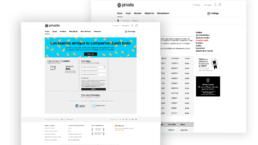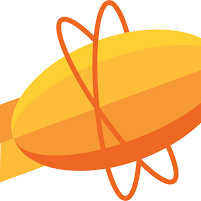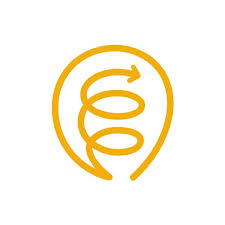CompanyPrivaliaProjectNew Referral ProgramYear2018Linkes.privalia.comRoleLead Product Designer
Precedents
What is referral marketing?
Word of mouth (WOM) has always worked well and, since the advent of social networks, the power of recommendations is greater. There are many companies that use referral marketing within their overall marketing strategy and promote it by incorporating incentives.
The referral program, also called Member Get Member (MGM), refers to the method of attracting new clients (godchildren) through an invitation sent by current clients (godparents).
Why does referral marketing work so well?
The main reason is that 83% of people trust the recommendations of their friends and family. On the other hand, more than half of customers say they are more likely to recommend something to a friend if they receive some tangible incentive to do so.
On the other hand is the reward the user receives by sharing, one of the most notorious success stories is the case of Dropbox, who grew 3,900% in 15 months using a referral program.
Challenge
In the case of Privalia, we had been using MGM under the name “Invite and win” for 8 years and we were obtaining good results. Around 40% of new members came through this referral program, with a positive impact of more than € 1M / year. With such good data, nothing indicated that there was a reason to change it, indeed, anyone dared to question or modify it.
The operation was like most referral programs of a few years ago: where the user (or godfather) entered the email of her friends or imported her contact list (godchildren) and sent an invitation email.
However, the definitive push to change this outdated system was given by the Spanish Agency for Data Protection (AGPD) through the Organic Law for Data Protection (LOPD) and the Law of Services of the Information Society and Commerce Electronic (LSSI), which questioned the data transfer procedure, without prior consent, used in this type of system. And that, definitely, in May 2018, it was going to end.
Role
Privalia’s Advertising Technology (AdTech) team, in which I participated as a Lead Product Designer (UX / UI), was in charge of carrying out the new referral program. My responsibility was to design a new, simpler and more intuitive experience that helps increase conversion and complies with current legislation.
We work with Scrum methodology, executing weekly sprints in a collaborative environment and in constant communication. For my part, I worked with the Design Thinking methodology, coordinating my deliveries with the team’s sprints.
Tools
Some of the main tools I used to carry out this project
Research
Interviews - understand by qualitative methods
I interviewed different users, who have and have not used the MGM system, to understand their current needs and problems.
- There were users who had seen it but had never used it, a large part of these users did not understand the reward system.
- The users who used it did so mainly motivated by the reward of € 10 or € 20 they got.
- Many users did not know more than three emails by heart (generally relatives or close friends), this was serious because it limited their radius of influence.
Safari - understanding by observation
On the other hand, I observed the behavior of our users with the referral program on our platform to understand their current needs and problems.
- The invitation link that the godson received led to a registration page where he had to re-enter the sponsor’s email to validate the association. Many of them forgot to enter it and, therefore, did not receive the voucher.
- The email sent by the godfather was automatically generated by Privalia, which lost its authenticity value. Many godchildren ignored this email because it “looked like” an automated message, not to mention that some of them landed directly in the “spam” folder.
Reviews - know what they are telling us
Another point that I addressed were the queries to the Customer Service (SAC), as well as the opinions in the application stores and the comments left on our website, related to MGM. Some interesting comments:
Data analysis - check our internal data
In addition, I did a deep analysis of internal data, I spoke with the different areas of business, marketing and data analysis to collect all the possible data of the current process. Some relevant data:
- Around 40% of new members came through this referral program, with a positive impact of more than € 1M / year.
- The contact import service was hardly used, the available options included outdated email services such as MSN or AOL, among others, that were not being used. What generated a feeling of antiquity and lack of maintenance of the service (nothing is further from the truth).
Benchmark - testing competitor solutions
Finally, I did an intensive benchmarking of the multiple solutions of different platforms, best practices and market studies that helped me to acquire knowledge so as not to start from scratch.
- Similar features: an “Invite and win” section within “My account” where you can see the money accumulated together with the godchildren who have accepted the invitation and an action to share your code or link on social networks.
- Differential functionalities: Airbnb and Uber allowed you to import your contact list via mobile phonebook, that way you could select a contact and send them an SMS in a simple way.
Definition
I grouped the users by similarity in needs and objectives. Then I made a User Persona, an Empathy Map and a User Experience Map for each of them to define their main Pains and Gains during the use of our referral program.
Main pains
- One of the main ones was that the godfather had to know by heart the emails of the friends whom he wanted to invite. Therefore, many users only invited relatives or close friends, of whom they knew their emails. There was also a maximum limit of 10 invitations. All of this limited growth.
- Some users imported their entire address book. To do this, they could choose outdated email services such as MSN or AOL, among others. In addition, when importing your contacts, all those people to whom you had ever sent an email were considered as contacts. Therefore, it was very likely to accidentally send SPAM.
- On the other hand, Privalia sent the email on his behalf and the sponsor could not personalize this message. What lost value of authenticity and recommendation.
- And, as if that were not enough, the link led to a registration page where the godson had to enter the sponsor's email again to validate the association. Many of them forgot to introduce it so they did not receive the voucher and, therefore, contacted the Customer Service (SAC).
Even with all these problems, the system worked. Since 40% of the new members came through this referral program. Which indicated that there was a significant degree of improvement.
Approach
Even with all these problems, the system worked. Since 40% of the new members came through this referral program. Which indicated that there was a significant degree of improvement.
Ideas - aligned with business needs
I tried to align the proposals with the business needs and priorities by talking to the different stakeholders in each area.
- Increase the number of godparents. We should facilitate and simplify the process of sharing your code or link through social networks, as well as turning godchildren into godparents.
- Improve conversion. Obtaining a greater number of godchildren would report a greater number of vouchers for the godparents, which would translate into a significant increase in purchases.
- Increase First Time Buyers users. Guide the user towards his first purchase so that he and his godfather can receive the reward.
- Increase the benefit of the referral program. "Celebrate" together with the godfather each voucher obtained and encourage him to invite more friends to get more money.
- Reduce the number of contacts with Customer Service (SAC). For this we had to be totally transparent with users and inform at all times what was the status of their invitation (pending, available and expired). Generating, in turn, notifications and alerts each time the status of any of them changes.
- Define a clear and concise value proposition. Encourage more new users to use the MGM by showing the clear value proposition on the initial screen and faster access to the terms of service that helps to understand its operation.
- Show the potential money they could be making. Once the user has understood and used the service for the first time, the second screen "invite_pending" will be the one that will be displayed the longest. I think the important thing here is to show the potential money you can be making. This screen is the one that will also be used when you do not have any pending money, it will give you an amount of € 0 and it will suggest that you continue using the service to earn more money.
- Consume to get the money. According to the conditions of the service, the money expires after 30 days, so it is important to show the user how many vouchers are about to expire and how much money they have available to spend.
Prototype
Use cases
We start by establishing all possible use cases:
- Godfather: First time to share a link
- Godson: registers with a godfather code
- Godson registers with a godfather link
- Godfather: receives notification and pending voucher upon registration of the godson
- Godson: makes his first purchase and becomes a godfather
- Godfather: receive notification and purchase voucher from the godson
Navigation flows
I continued with a quick sketching of the different screens, distributing the information architecture with the main elements and establishing the navigation flows between screens.
On the main screen, the “invite and win” landing itself, I placed the value proposition “above the fold” along with the buttons to share on social networks. When the user earned vouchers, we replaced this value proposition with an animated graph with all the accumulated profit.
Why did I choose an animated graph to represent the accumulated profit?
I proposed an experience that “hooks” the user and encourages him to use it, with some gamification techniques (such as objectives, rewards, etc). For this I proposed some motion graphics for certain screens of success and money graphics.
I chose a pie chart because it creates the illusion of a progress bar. These show users, according to numerous studies, a clear idea of the goals to achieve to reach the final objective and, therefore, they are more likely to want to complete it. Also, this need to complete releases massive amounts of endorphins.
Validate
I validate the prototypes with some of our users through usability tests to understand problems or points for improvement.
An interesting learning was that users did not usually modify the default message when they shared the link on social networks, which could affect its credibility, as it was not personalized. So we work on a message with a much more natural language, to make it appear to be written by themselves.
Implement
Finally, I documented all the specifications and design requirements from mockups, scenarios and user stories, using different types of tools to facilitate subsequent development.
The development team used the scenarios to divide the tasks by use cases. Some functionalities, such as notifications and alerts for status changes, it was decided to address them in subsequent phases.
Outcome
We compare the results with the same month of the previous year, in a similar comparative framework, for all countries. These were the results:
Conversion increase between 12% and 69%
Increase in First Time Buyer between 27% and 96%
Profit increase from 17% to 89% (between €50k to €200k / month)
Note: Privalia is present in several countries, so I put the lowest and highest values that we obtained in all of them.
One of the most surprising things that we found on the internet was that some user had posted their code in a forum and had obtained more than 400 godchildren, which made a sum of € 4,000 in discounts.

















